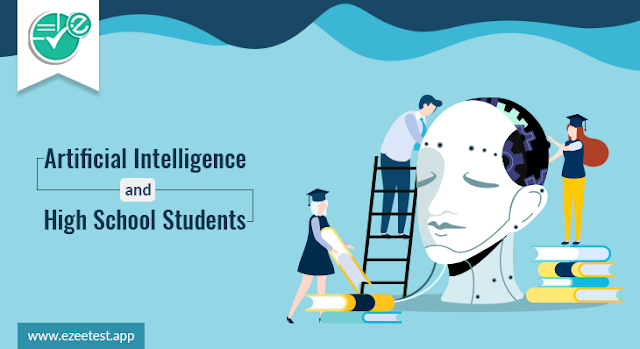Artificial Intelligence in schools is changing the game for students and influencing a lot in shaping their careers, social networks, or the communities.
At this juncture, every high school student must know the implications of Artificial Intelligence in schools and life activities.
Let us explore more here.
The use of Artificial Intelligence is the norm in several sectors today and we are realizing its benefits already in our day to day activities. With the help of Artificial intelligence and virtual assistants, we are making our daily routines and activities easy and convenient.
For instance,
A] The photo editor in the smartphone supports and suggests you different modes
B] The YouTube channel suggests the related videos for the audience
C] Any online services we use such as banking, traveling, and, more rely on AI algorithms or chatbots.
So, when we are using the AI technology in one or the other way in our daily life knowingly or unknowingly, it is high time that our high school students are aware of the use of AI technology in schools, its impact in daily life and learnings.
Though the school is not providing a full course right now in the curriculum, there are huge resources available online. It is highly recommended that our high school students must know about Artificial Intelligence, the advantages, and disadvantages of it.
Things High School Students Must Know About Artificial Intelligence
As a pre-note, it is necessary to understand that computers or the programs are able to think and learn as if they are human beings. However, it is artificial or is programmed to do so by trial and error to arrive at perception, and thus has its limitations.
A] To understand and demonstrate the machine capabilities, perceptions, or limitations to an extent, it is recommended to explore open machine learning tools. A few of them includes Google AI such as ‘Quickdraw’ or the ‘Semantris’ where the students can experiment and know what exactly makes the machine intelligent.
B] The students can use ‘Voki’ or ‘my talking avatar’ for creating or instructing learning and share with friends. Likewise, working with Akinator, the web genius or the Google Home helps the students to understand how many questions the machine puts and how many attempts it takes to arrive at a specified answer.
C] The students can use apps that provides opportunities for them to learn with additional help and practices such as Oddizzi for geography or Splash math for learning maths.
D] The students must understand to use elementary data for concept representation, such as using a map for the territory, or a diagram to represent board game. And, the computers use the data to represent a concept which can be manipulated through different inputs.
These are some of the practical and learning experiments by which the student understands the perception ability of artificial intelligence.
Conclusion:
In addition to these AI concepts, it is anticipated that the high school students must also know the social and ethical impact of using AI.
Lucas Perry, Future of Life Institute, rightly says, “ The end goal of AI safety is to create beneficial intelligence, not undirected intelligence. What beneficial exactly entails is still an open question that largely exists in the domain of ethics.”
Use of AI technology is not rocket science, once you know the basic concepts. The students must be introduced about AI contributions in the social life.
They should understand how AI applications impact the life activities and the ethical criteria the AI systems must meet. They must be able to think and evaluate AI technologies from an ethical or social perspective.
The thought of human value is more needed whenever AI applications and its contributions are highlighted. And, the students must be aware of it positively, when addressing AI in schools or outside the school.

Comments
Post a Comment